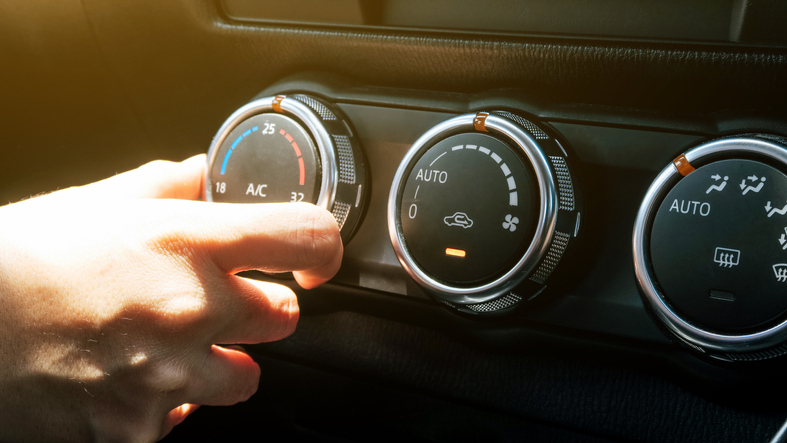Summer Is Coming: What You Need to Know About Automotive A/C Systems for Auto Careers

It goes without saying that air conditioning is a must-have for drivers during the summer months. Taking moisture and heat from the air and leaving colder air in their wake, A/C systems fight back against summer humidity to give drivers a cooler, more comfortable ride. But how do they work, and what is necessary for them to function correctly?
Those hoping to work in the automotive industry should know how these systems function so they can explain to clients how they’re getting those cool breezes from their cars. Here’s a primer on automotive A/C systems.
There are Three Important Parts of A/C Systems
Car air conditioning systems are composed of numerous parts to help them function properly and deliver cooler air throughout a vehicle. However, there are three in particular that are arguably the most instrumental in their functionality. These are the evaporator, compressor, and condenser.
The lower pressure end of an A/C system contains the evaporator, which is found within the cabin. The evaporator is where heat is absorbed and where gas takes the heat out of the vehicle’s passenger compartment before having cold air blown into it by a fan.
In the portion of the A/C system with higher pressure, you’ll find a pump known as a compressor, which is a belt tied to a crankshaft. It is used to compress the refrigerant — now in the form of a gas — and deliver it to the condenser.
Those in auto careers may know that the condenser is the part which radiates heat from the A/C system, and allows for the gaseous refrigerant to be cooled by air flowing within the condenser before once again becoming a liquid.

Auto A/C Systems Use a Refrigerant, But It Wasn’t Always the Same One
For a long time, automotive A/C systems used a refrigerant called R-12, or Freon, which contained chlorofluorocarbon (CFC). However, this was discontinued after 1996 due to its destructive effects on the Earth’s ozone layer.
Instead, cars now use CFC-free refrigerant (R-134a), and any car built prior to 1996 must be retrofitted so that this newer refrigerant can be used. Many auto manufacturers have also been using an even safer and cleaner type of refrigerant, known as HFO-1234yf.
Pros in Auto Careers Should Know When A/C Systems Should Be Serviced
Students completing their training in the automotive industry will be well-served to learn how to spot signs that an A/C system is not functioning properly, and when it needs to be looked at or recharged.
If the system is not cooling the car sufficiently, the cool-down cycle is too long, or it generally doesn’t feel as if it is pumping enough cold air through the car, it is likely time to bring it to an auto professional.
Despite the sealed-off nature of an A/C system, the vehicle may also need to have the air conditioning system recharged if the air isn’t cooling the car enough. In this case, refrigerant levels are probably low, and will therefore merit an inspection.
Want to start your online automotive school training?
Contact Automotive Training Centres for more info!

